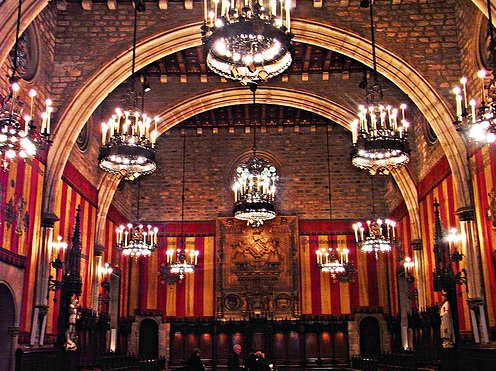- Read offline
- Access all content
- Use the in-app Map to find sites, and add custom locations (your hotel...)
- Build a list of your own favourites
- Search the contents with full-text search functionality
- ... and more!
Ajuntament
Barcelona's city hall

On Plaça de Sant Jaume, right across from the Generalitat, stands the complimentary (and sometimes conflicting) centre of power in Catalonia, Barcelona's city hall.
Jaume I sowed the seeds for the Ajuntament (literally, city council) at the same time as the Generalitat, when he appointed a committee of 20 peers in 1249; by 1272 this had evolved into the annually selected Consell de Cent (Council of a Hundred), which ruled the city until 1714.
It proved to be one of Europe’s most successful representative governments, partly through its unusual flexibility: tradesmen as well as patricians served. To avoid politicking, names of approved candidates were chosen by lottery.
Like the Generalitat, the Ajuntament's palace got a dull neoclassical façade, but also like the Generalitat it's good Gothic underneath; a part of the original can be seen on C/ de la Ciutat, watched over by Santa Eulàlia. The oldest part of the building, the Saló de Cent by Pere Llobet (1372), has round ribs reminiscent of Saló de Tinell; it was restored by Domènech i Montaner in the 1880s.
Images by Jaume Meneses

